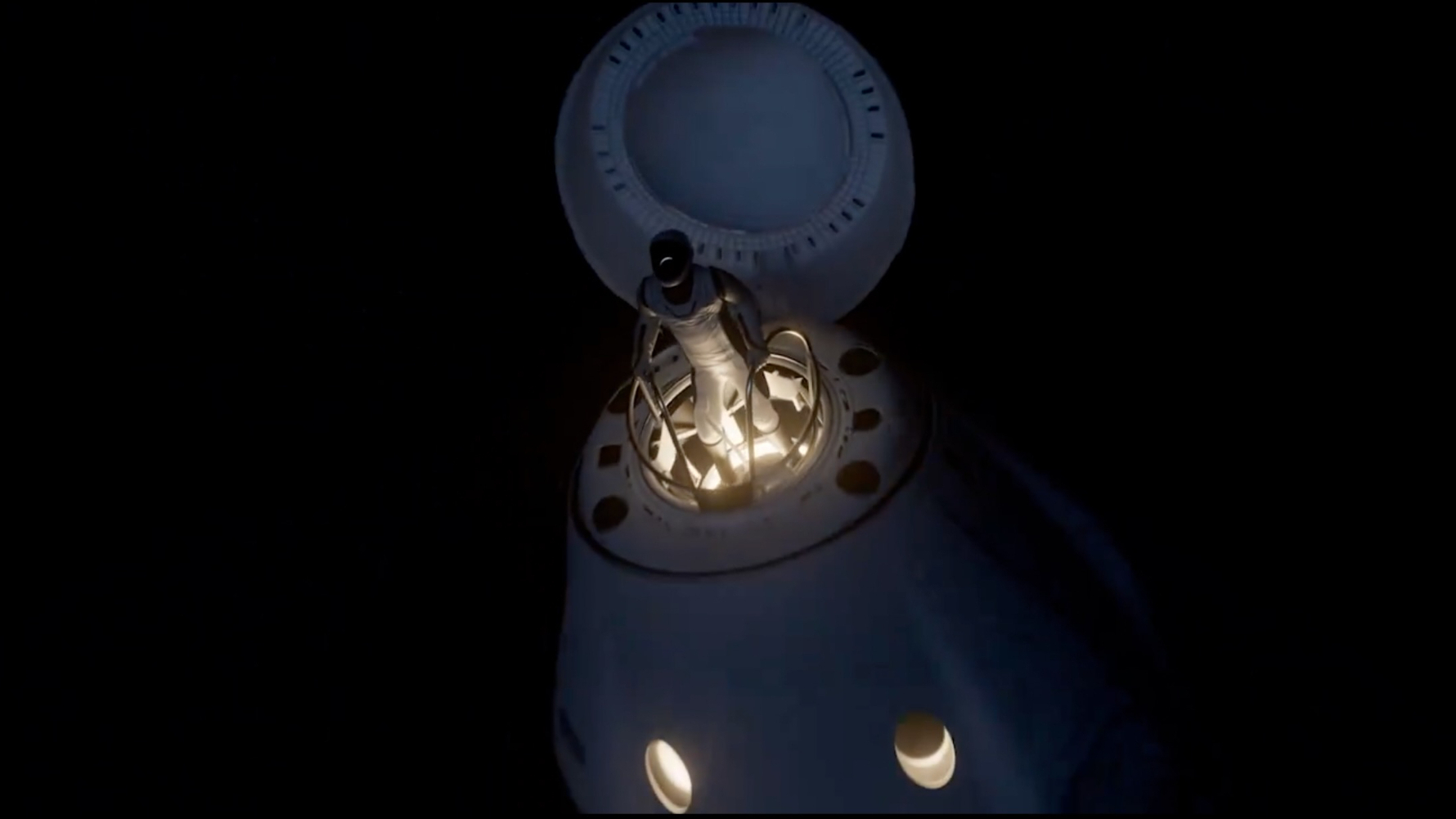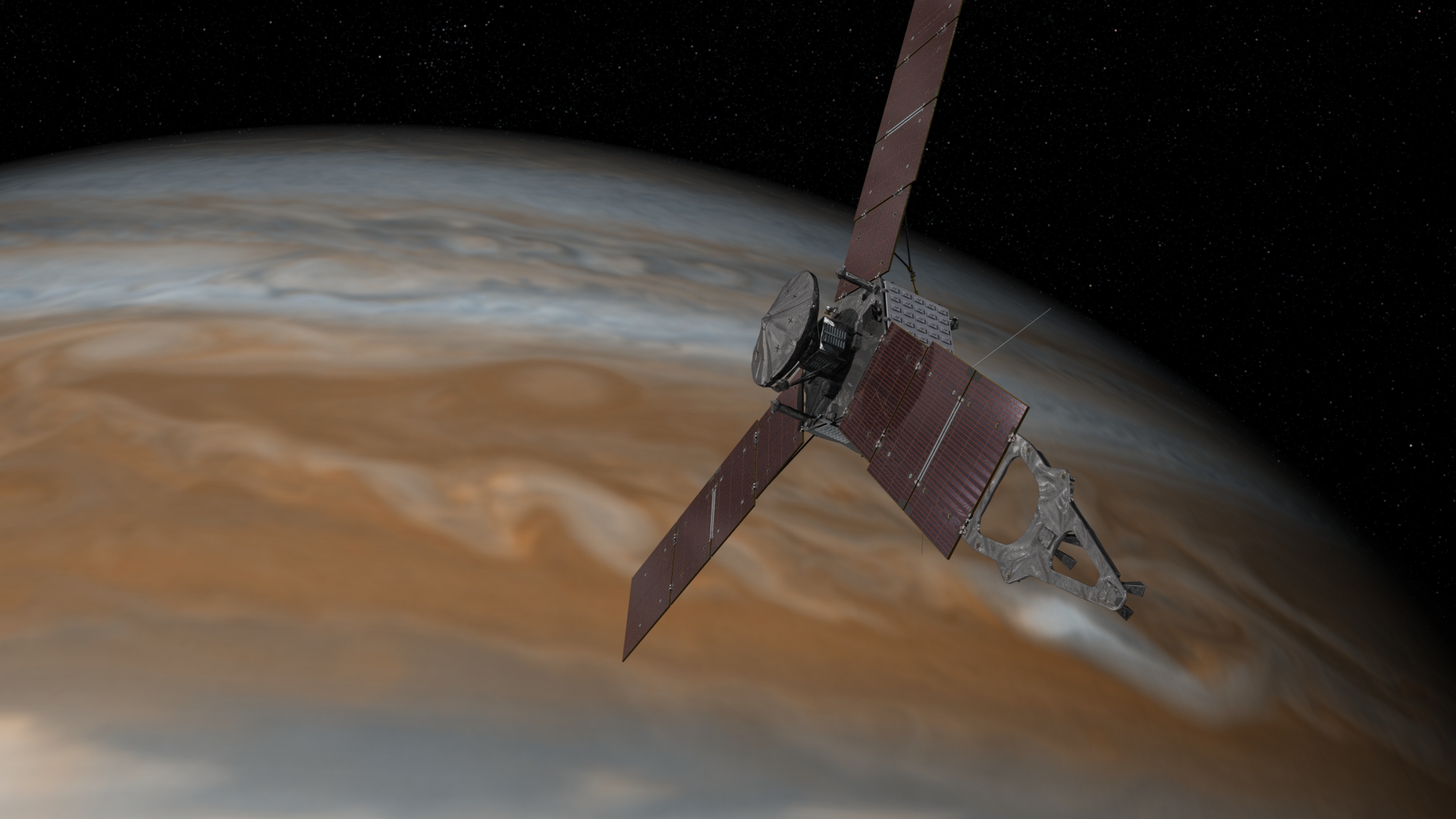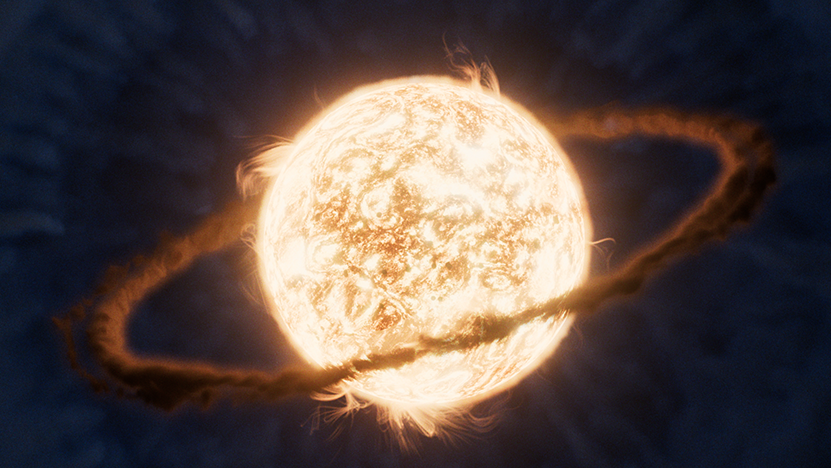
Update for 11 p.m. ET on Aug. 27: SpaceX has now delayed the Polaris Dawn launch until no earlier than Aug. 30 due to a helium leak and bad weather. Read our delay stories here and here.
Polaris Dawn is poised to make history.
The SpaceX mission, which is scheduled to launch early Tuesday morning (Aug. 27), will send four people to orbit for five days aboard a Crew Dragon capsule. That quartet will get farther from Earth than any human since the Apollo era — and two of them will perform the first spacewalk ever conducted by a private mission.
Here’s a brief rundown of what to expect during the epic Polaris Dawn spacewalk, which you'll be able to watch live, via a SpaceX webcast.
Mission Day 3
The spacewalk, or extravehicular activity (EVA), will take place on the third day of the mission — so, on Thursday (Aug. 29). SpaceX and the Polaris Dawn team have not yet announced a target time.
The EVA will feature two of the four crewmembers — commander Jared Isaacman, the billionaire tech entrepreneur who funded and organized Polaris Dawn, and mission specialist Sarah Gillis, an engineer at SpaceX. But the other two astronauts — mission specialist Anna Menon, also a SpaceX engineer, and pilot Scott "Kidd" Poteet, a former lieutenant colonel in the U.S. Air Force — will don their EVA suits as well. That's because the Crew Dragon doesn't have an airlock, so the capsule's interior will be exposed to the vacuum of space.
Get the Space.com Newsletter
Breaking space news, the latest updates on rocket launches, skywatching events and more!
The entire EVA operation — from the initial venting to the repressurization of the capsule — will take about two hours, Isaacman said during a press conference on Monday (Aug. 19).
The actual spacewalking component will comprise perhaps a third of that time. Isaacman and Gillis will spacewalk sequentially, not together, and each will likely spend 15 to 20 minutes outside the capsule, according to mission team members.
Both crewmembers will fully exit the Crew Dragon, Isaacman said. But don’t expect anything too fancy or dramatic, like Ed White's iconic spacewalk in June 1965 — the first-ever EVA by an American astronaut, during which White dangled far away from his Gemini capsule on a 23-foot-long (7 meters) tether.
"The Ed White photo is historic, but I think, as you know, Buzz Aldrin taught us that's not the right way to do an EVA," Isaacman said on Monday, adding that he and Gillis will aim to always maintain at least one point of contact with the "mobility aids" that SpaceX engineered for the mission.
"We're just not going to be just floating around," he said.
Testing, testing
Isaacman and Gillis will tick off a number of milestones during their time outside the Crew Dragon.
"It'll look like we're doing a little bit of a dance. And what that is is, we're going through a series of test matrix on the suit," Isaacman said. "The idea is to learn as much as we possibly can about the suit and get it back to the engineers to inform future suit design evolutions."
Indeed, the EVA suits, which SpaceX developed in house, are not one-offs for Polaris Dawn alone. The company intends to use them — or future versions of them — on a variety of missions in Earth orbit and beyond.
"It's not lost on us that, you know, it might be 10 iterations from now and a bunch of evolutions of the suit, but that, someday, someone could be wearing a version of which that might be walking on Mars," Isaacman said. "And it feels like, again, a huge honor to have that opportunity to test it out on this flight."
Polaris Dawn is the first of three planned missions in the Polaris Program, which Isaacman is organizing and funding. If all goes according to plan, the third Polaris flight will be the first-ever crewed mission of Starship, the enormous vehicle that SpaceX is developing to help humanity settle the moon and Mars.
Join our Space Forums to keep talking space on the latest missions, night sky and more! And if you have a news tip, correction or comment, let us know at: community@space.com.

Michael Wall is a Senior Space Writer with Space.com and joined the team in 2010. He primarily covers exoplanets, spaceflight and military space, but has been known to dabble in the space art beat. His book about the search for alien life, "Out There," was published on Nov. 13, 2018. Before becoming a science writer, Michael worked as a herpetologist and wildlife biologist. He has a Ph.D. in evolutionary biology from the University of Sydney, Australia, a bachelor's degree from the University of Arizona, and a graduate certificate in science writing from the University of California, Santa Cruz. To find out what his latest project is, you can follow Michael on Twitter.
-
Unclear Engineer "If all goes according to plan, the third Polaris flight will be the first-ever crewed mission of Starship,"Reply
Now I am beginning to wonder how intimately Isaacman is being integrated into SpaceX's future. I had been thinking "space tourism" when I have been reading about his "Polaris Dawn" missions. But, testing SpaceX EVA suits and having a crew of SpaceX engineers seems pretty far removed from tourism. And being the first fight crew on a StarShip seems like an integral part of SpaceX's development program. Which makes it seem strange that Isaacman is funding the 3 missions. Is he getting stock, or is this all gratis from a guy who really wants to be an astronaut? -
skynr13 It may not be space tourism their after, but the quest for Mars. Like Isaacman said, 'maybe a later interation of this suit will be used on Mars'. So, this may all be in preparation for that. Also, it may not be stock he's after, but to tag along with Elon to land and create the first colony on Mars. What more could you ask for?Reply -
TheCoolBrit Isaacman really got SpaceX to push the limits, I believe it was Isaacman that insisted on getting Crew Dragon to go beyond the safety of the Van Allen belt thus expanding the envelop of Crew Dragon, including modifications required for a possible lunar mission, This could even lead to Lunar flyby capability as the heatshield from the outset was designed to survive re-entry close to that velocity. Crew Dragon also was designed with up to 10 day flight duration.Reply -
josefnspace the orbital illustration at the SpaceX Polaris Dawn pageReply
shows an east to west configuration path.
is that accurate ?
- - - -
the EVA is scheduled for September 12 at 02:23 ET (September 11 23:23 PT/ 0623 GMT)
live webcast will begin about one hour prior on www.spacex.com -
billslugg The illustration appears to be an artist's concept. Retrograde is very expensive because you don't get the Earth's speed, it works against you.Reply -
Unclear Engineer Not to mention that a retrograde orbit would mean that other orbiting objects are coming at you at twice orbital velocity, so much less warning time for maneuvering to avoid collisions. And, there would be a lot of things coming at you, rather than going with you and a few getting too close for comfort.Reply
Think of it as driving the wrong way on a crowded highway instead of going with traffic on the same highway. -
josefnspace thanx guys. spacex has adjusted the flightpath graphicReply
into a solid line. apparently someone there info'd the artist.









